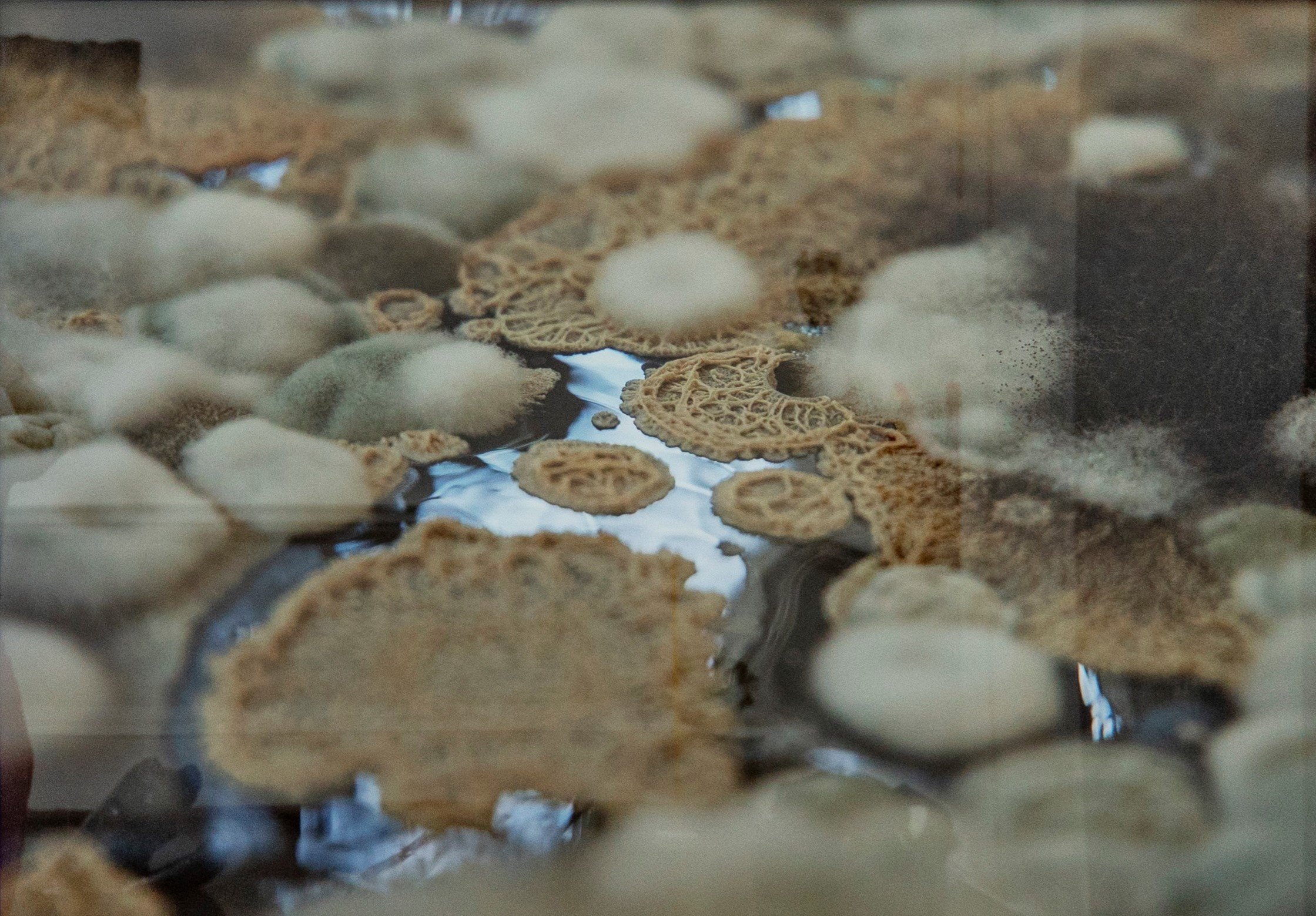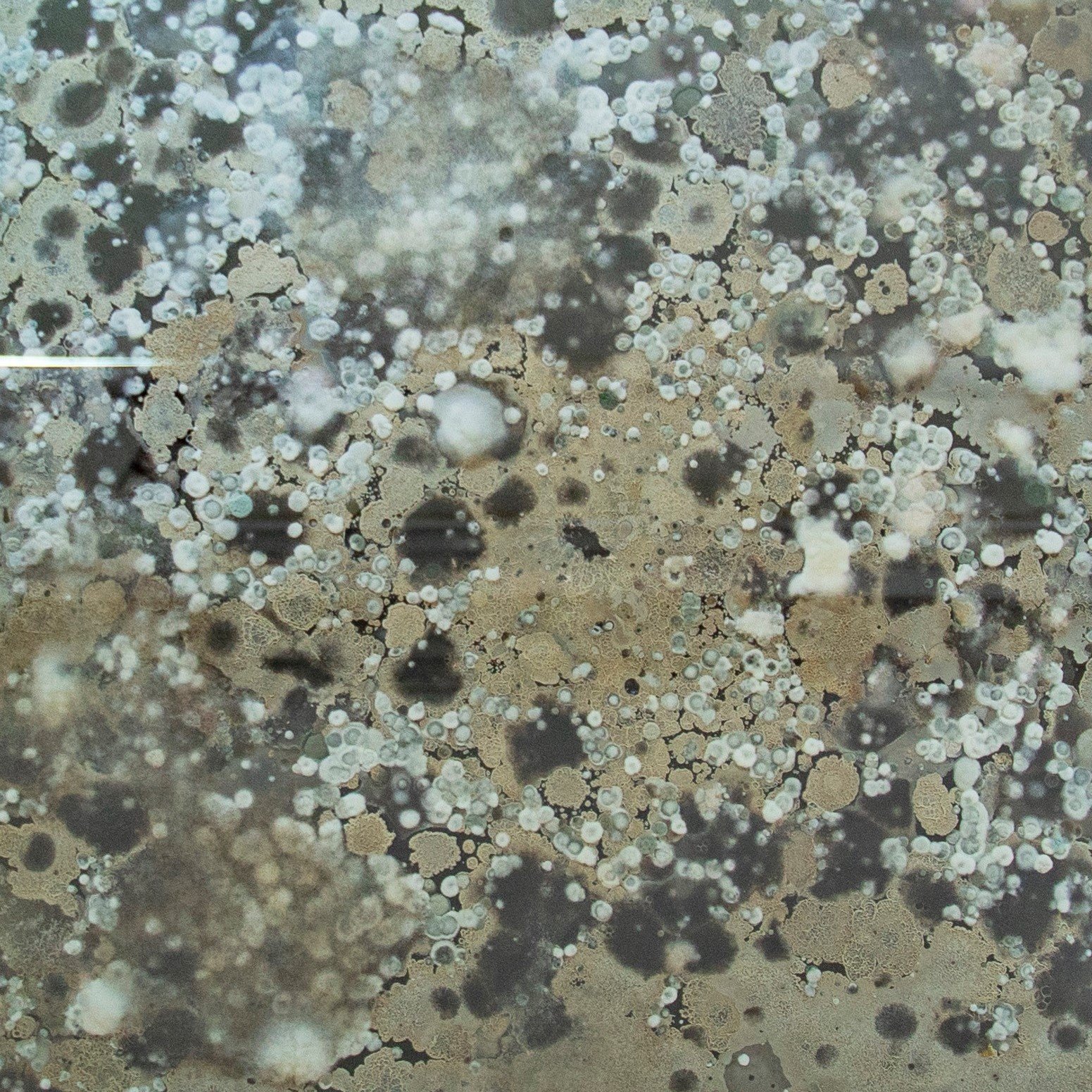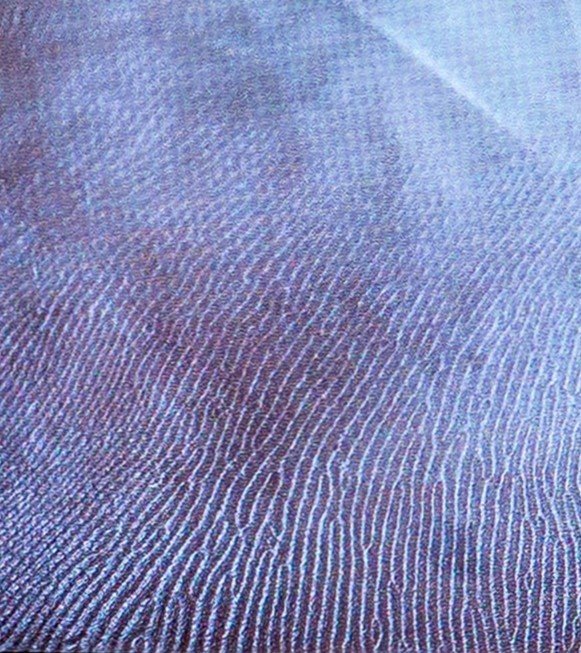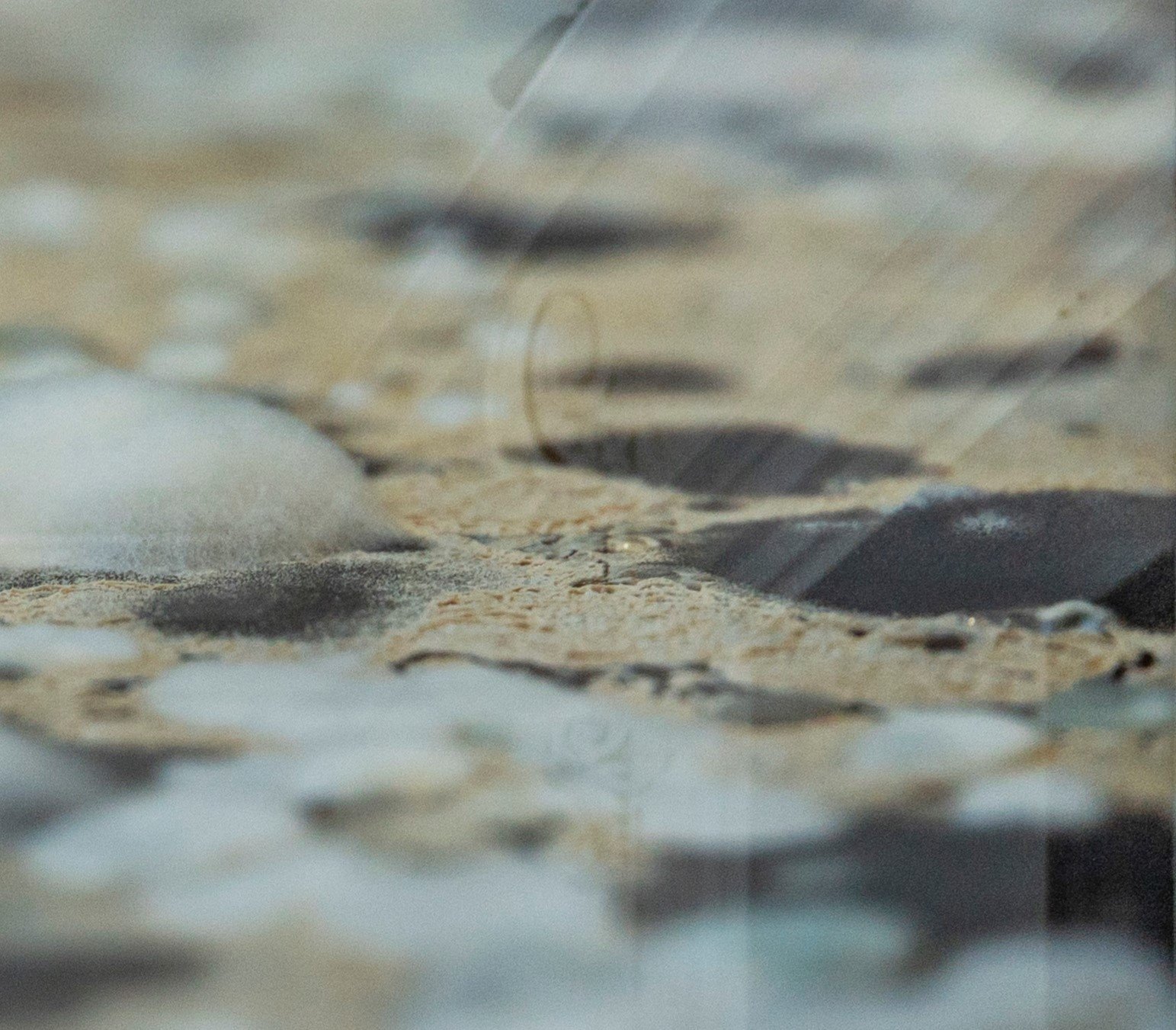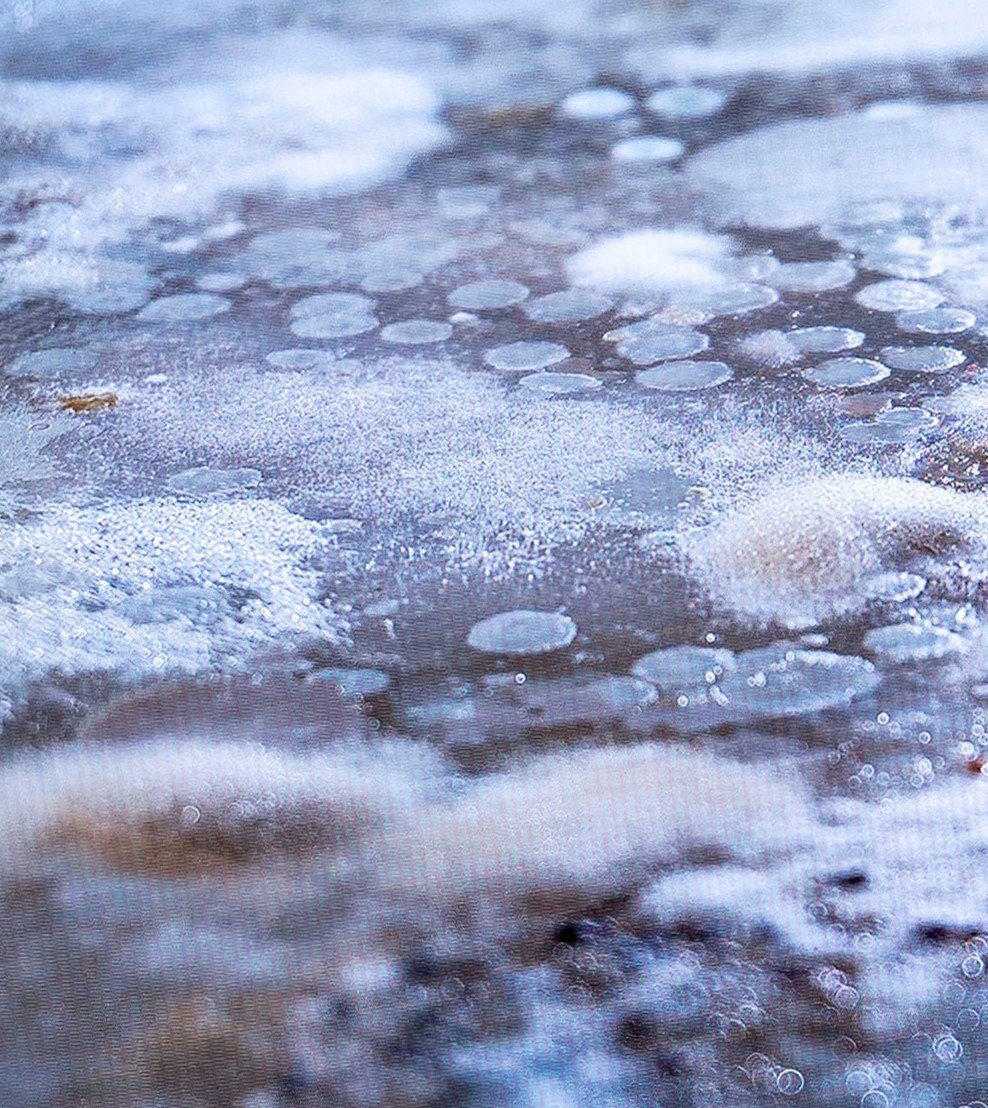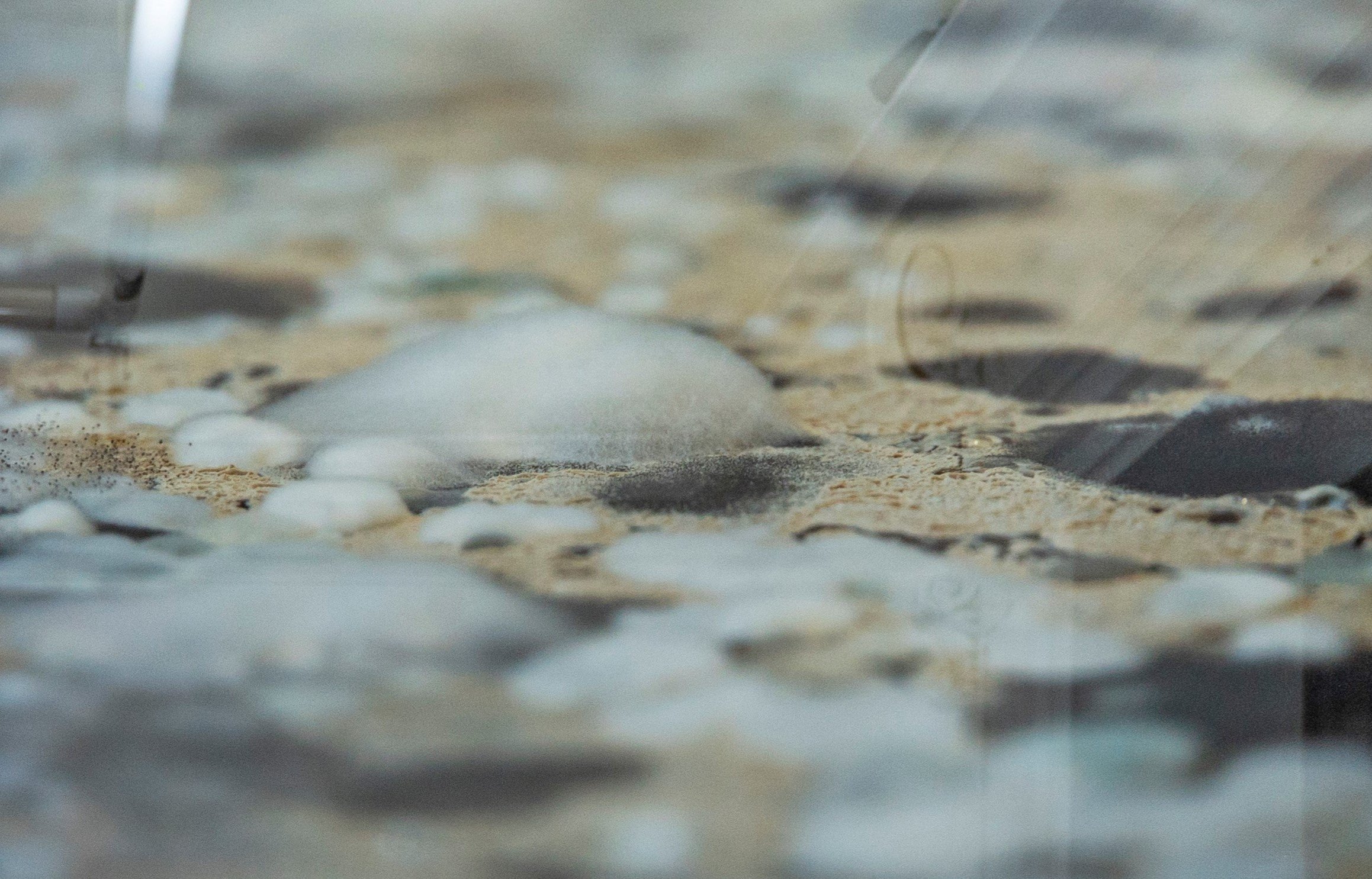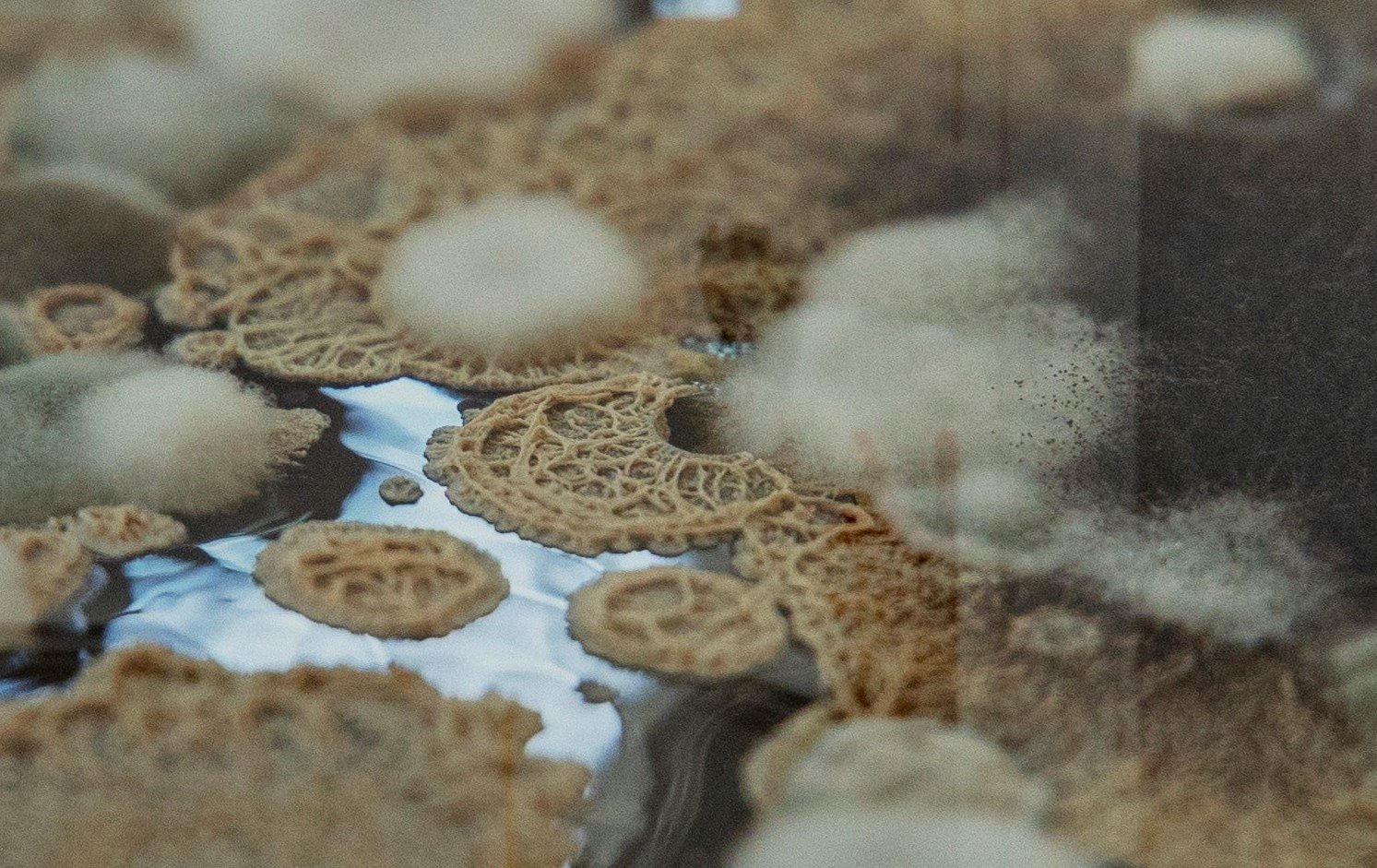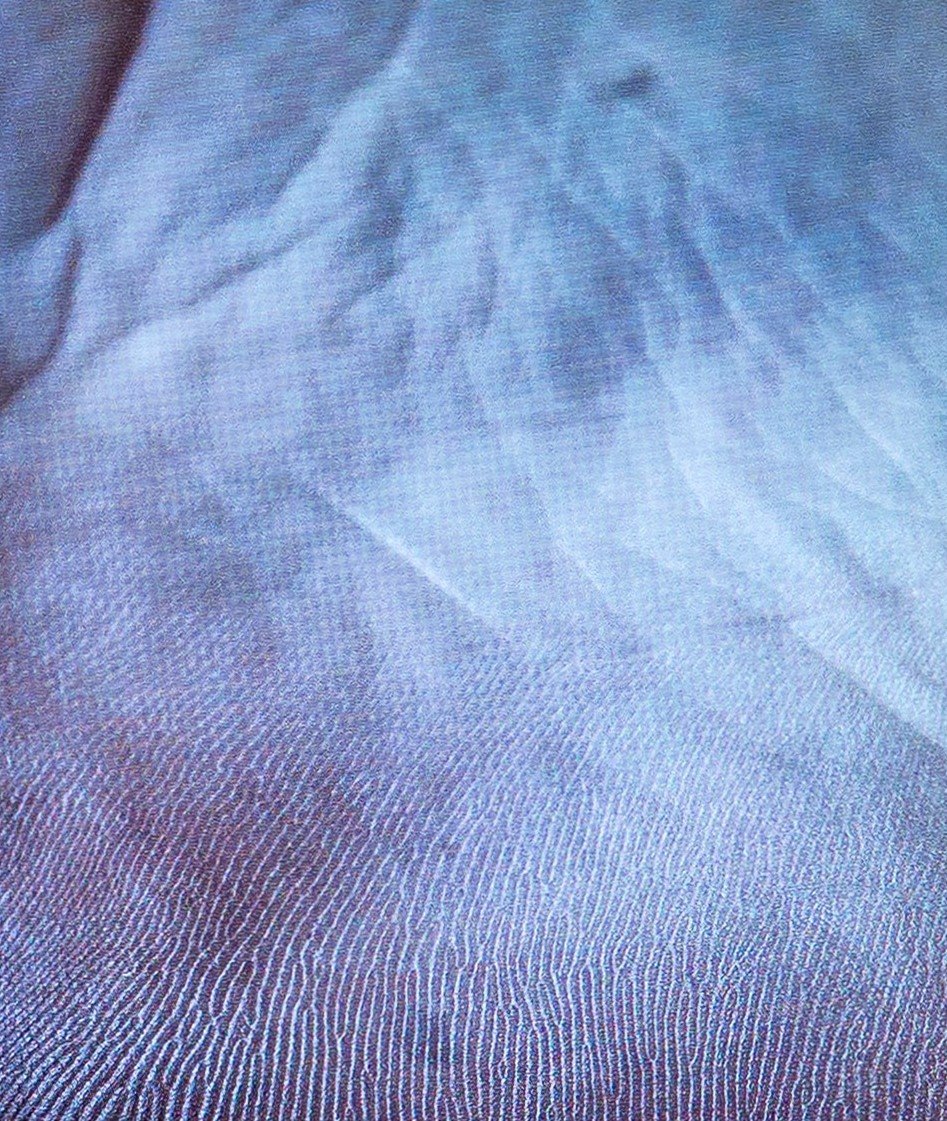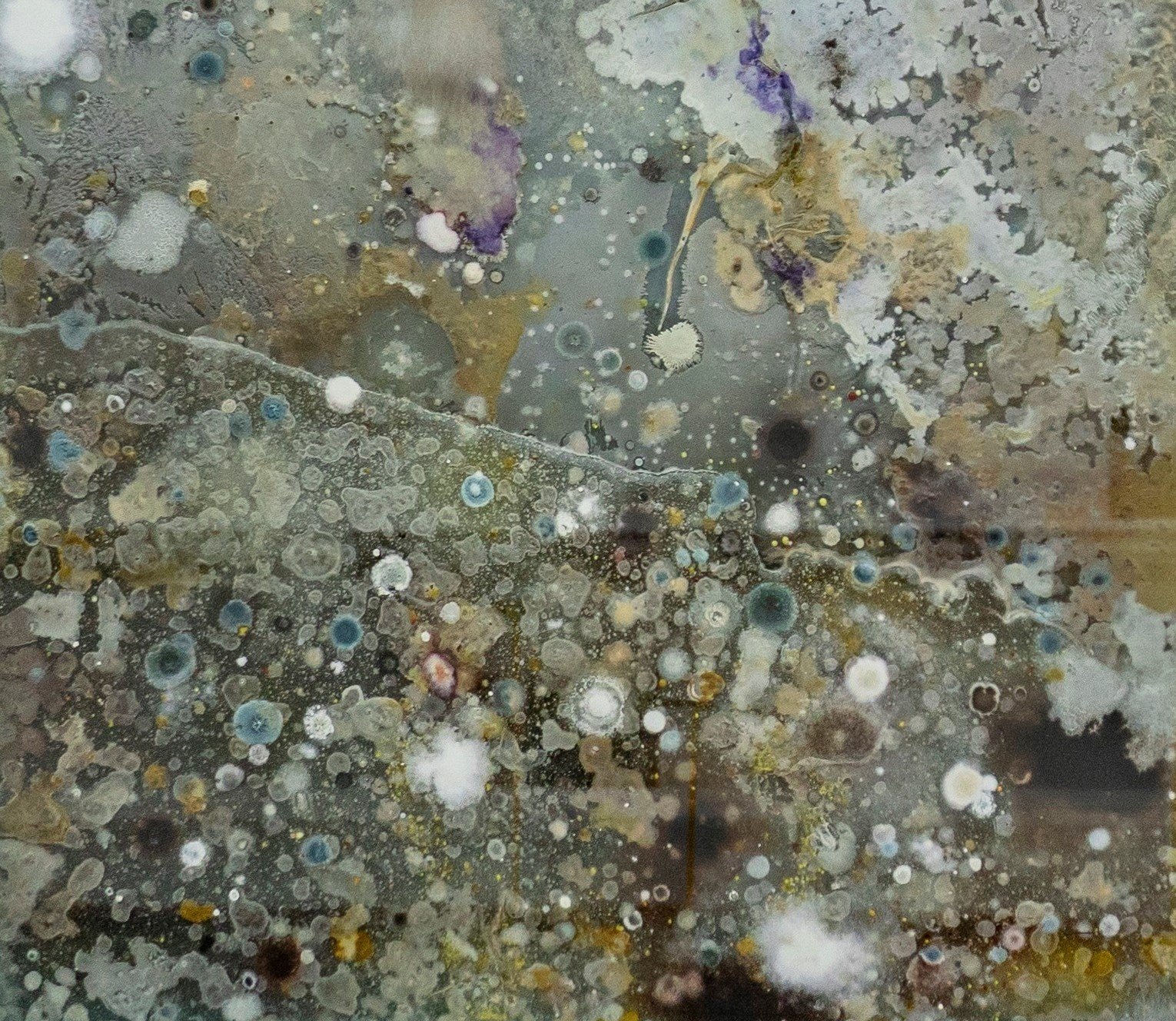Agents of Life: Reflections on Theresa Schubert’s Milieu in Soil Conversations
By Dineo Diphofa
March 2024
In our ever-growing world, we often find ourselves consumed by the pressing concerns of human existence: our needs, desires, and the far-reaching consequences of our actions on the environment. Yet, beneath the surface of our daily lives lies a captivating and often overlooked world that plays a vital role in the complexities of life. This world is brought to the forefront by German artist Theresa Schubert through her photographic prints, Milieu (2023), which invites us to step beyond the boundaries of the Anthropocene and explore the elements of microbial life.
At the same time, Soil Conversations, an exhibition where Schupert was exhibiting, brought together nine artistic perspectives from Johannesburg, Cape Town, and Berlin. The exhibition embarked on an exploration of the granularity of soil. Themes such as soil as material, identity, memory, body, and the digital and speculative aspects of soil converge in a dynamic platform that is not limited to a physical exhibition but extends into the realm of thought and contemplation. Soil Conversations considers the intricacies of soil as both a material and a bearer of memory, identity, and speculative futures. The exhibition defies the conventional understanding of soil, presenting it as more than just a foundation but as a space laden with meaning, identity, and history. It challenges linear narratives and welcomes interstitial spaces where boundless knowledge resides.
Whatever it may be, the way you tell your story can make all the difference. This exhibition, which took place at Galerie im Körnerpark in Berlin from 27 May – 30 August 2023 before coming to Johannesburg Art Gallery (27 August - 18 November 2023), explored the relationship between humans and the lived environment. It looks at soil as a planetary boundary, a resource that has been exploited, a territory that forms geography, and a mixture of nurture, trauma, and cycles of life. It encourages us to engage with the speculative as a defining aspect of our present moment, shaping our relationship with the world.
The inclusion of Theresa Schubert's Milieu (2023) in this context is a striking parallel. Just as Soil Conversations invites us to explore the hidden intricacies of soil, Schubert takes us on an intimate journey into the microcosm of microbes that coexist with us, shaping the very essence of life itself. Schubert's work offers a powerful reminder that the photographic prints she captures act as snapshots, chronicling the growth and intricate workings of microorganisms she cultivates within her glass petri dishes. These minute life forms, invisible to the naked eye, craft their own intricate ecosystems, engaging in subtle patterns of interaction (or intra-action, as coined by Karen Barad). Schubert's work, through meticulous observation and magnification of these minuscule entities, constructs a bridge connecting the disciplines of science and art. The manner in which Shubert titled the work reflects quite strongly in this regard. Milieu refers to the encompassing environment or context that surrounds and influences a particular situation, individual, or artistic creation. In the context of contemporary bioart, the term resonates deeply, for it encapsulates not just the physical setting, but the very essence and interconnectedness (or intra-connectedness) of life itself. Bioart transcends conventional artistic boundaries, venturing into a realm where living organisms, scientific inquiry, and creative expression converge. Within this innovative space, the milieu is more than a backdrop; it's the living canvas upon which artists and scientists collaborate to explore the delicate balance of nature, biology, and the ethical implications of human intervention. It embodies the ecosystems, organisms, and the intricate web of relationships that define our existence. Understanding the milieu in bioart is akin to unraveling the secrets of life, where art becomes a medium to navigate, challenge, and reimagine our relationship with the natural world. It is within this dynamic milieu that contemporary bioart thrives, inviting us to think about the boundaries of creativity as well as our relationship to the lived environment – no matter how small or big these environments may be.
Microbes, often inconspicuous and easily overlooked, are the silent agents of life, bearing a wealth of information about us and the environment we inhabit. These microorganisms pervade our bodies, our surroundings, and even the air we breathe. Schubert's photographic prints thrusts these microorganisms into the spotlight, rendering them visible to the human eye, despite their diminutive size. Milieu (2023) beckons us to venture beyond our immediate concerns, encouraging us to contemplate the complex choreography of life at the microscale. At a time when the devastating consequences of human actions on the environment, wildlife, and climate are becoming increasingly apparent, Schubert's work offers a refreshing and essential perspective.
The display of the four-color photographic prints arranged in a grid formation serves as a portal into the hidden world of micro-organisms. Each print captures the ethereal beauty found within petri dishes, offering a magnified glimpse into the environment of microbial life. These prints – which form part of a larger body of performances, videos and installations under the same title – beckons viewers to peer into a a convergence where microbial landscapes morph into abstract compositions. The juxtaposition of these prints not only celebrates the visual allure of microbial existence but also serves as a poignant reminder of the profound and often overlooked magnificence thriving within the unseen dimensions of our world. Viewers are called to contemplate the delicate dance of life unfolding at a microscopic level, prompting reflection on the interconnectedness of all living beings.
The selection of Schubert’s photographic prints redirects our focus away from our self-centered tendencies and the relentless pursuit of human needs, compelling us to reflect on our responsibilities in the face of the immeasurable consequences of unchecked global capitalism. She invites us to confront our collective apathy toward the repercussions of our actions, often driven by immediate gratification. In a world where it sometimes appears that humanity is steering blindly towards its own self-destruction, Schubert's work serves as a stark reminder that the microbial world is inextricably interwoven with our survival. These small yet powerful organisms hold the key to understanding our well-being, our environment, and the fragile balance of the world. By capturing the essence of microbial life and making it visually accessible, Schubert's prints transcend the boundaries that often separate science from art, providing us a glimpse into a world that is all too frequently overlooked, yet is fundamentally necessary.
As we immerse ourselves in Schubert's milieu, we embark on a journey that allows us to marvel at the elegance and intricacy of the microscopic universe that envelops us. It serves as a testament to the importance of acknowledging the unnoticed and the seemingly imperceptible, reminding us that in the grand moments of life, every microbe holds significance. In Milieu (2023), art and biotechnology converge to illustrate the nuances of our world, both large and small, reminding us of the beauty that lies beneath the surface.
Details
Credits:
Theresa Schubert (GER, 1983), Milieu, 2023, Photographic print, 80 x 80 cm // 80 x 120 cm, Images Courtesy of Nisha Merit.
Theresa Schubert (GER, 1983), Milieu, 2018, video work and installation, dimensions variable, Images Courtesy of Nisha Merit.
For information on the artist, visit https://www.theresaschubert.com/
For information on VIAD’s bioart research stream (Bioart + Design Africa), visit https://www.viad.co.za/viad-bio-art-cmrc





